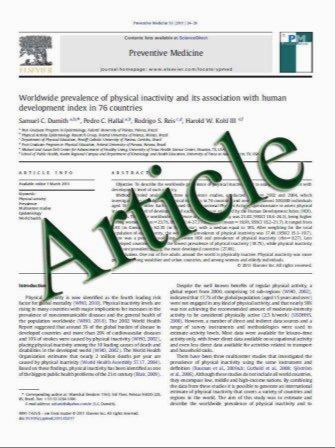Gender-specific risk factors for incident gout: a prospective cohort study
- نوع فایل : کتاب
- زبان : انگلیسی
- مؤلف : Jiunn-Horng Chen &Wen-Ting Yeh & Shao-Yuan Chuang & Yi-Ying Wu &Wen-Harn Pan
- چاپ و سال / کشور: 2011
Description
Previous reports suggested that gout incidence increased with serum uric acid (sUA) level. In addition to sUA, we aimed to examine the gender-specific risk factors for incident gout. A prospective study was conducted using data of the MJ Health Screening Center and outcome database from Taiwanپfs National Health Insurance. Cox proportional hazard model was used for risk analysis of incident gout. During a mean follow-up of 7.31 years for 132,556 individuals aged .18 years, 1,606 subjects (1,341 men and 265 women) with clinical gout were defined. Hyperuricemia (sUA .7.7 mg/dL for men or .6.6 mg/dL for women) was the most important risk factor for gout development with a respective hazard ratio of 9.65 (95% confidence level, 8.53.10.9) for men and 9.28 (7.00.12.3) for women. The age-standardized sUA.gout relationship demonstrated a differential impact of sUA level on gout incidence between men and women. Metabolic comorbidities of hypertension, obesity, and hyperlipidemia were significantly associated with gout with respective HR of 1.32 (1.17.1.48), 1.30 (1.15.1.47), and 1.12 (0.99.1.26) for men and 1.34 (1.02.1.77), 2.15 (1.67.2.76), and 1.70 (1.32.2.19) for women. However, the relationship between diabetes and incident gout was not as prominent. The sex difference of sUA.gout relationship and the association between metabolic comorbidities and incident gout were demonstrated. Generalizability of these findings to other ethnic population needs further investigation.
Clin Rheumatol Received: 31 October 2010 / Revised: 8 May 2011 / Accepted: 8 June 2011


